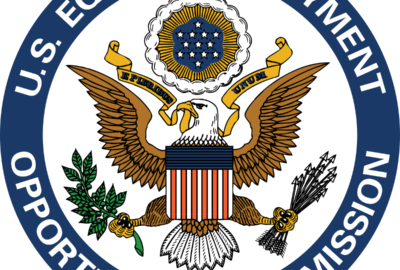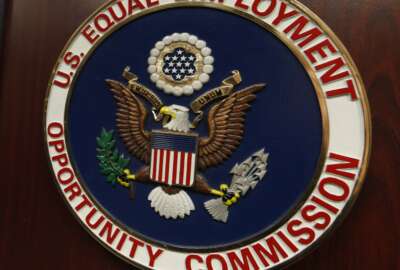
Agency leadership is ‘pivotal’ for effective anti-harassment policies
The Equal Employment Opportunity Commission’s latest guidance outlines promising practices for federal agencies to prevent and address harassment in the...
For more than a decade, harassment has remained the number one issue in employee discrimination complaints filed against federal agencies.
The prevalence of harassment in the federal sector makes it all the more important for agency leaders to commit to implementing effective anti-harassment policies, the Equal Employment Opportunity Commission said in new recommendations for agencies.
“Leadership plays a pivotal role in preventing and correcting harassment,” Marqui Willoughby, an attorney advisor at EEOC, said in an interview with Federal News Network.
Among a host of best practices for agencies to effectively manage their anti-harassment policies and address allegations when they arise, leadership’s efforts are front and center. The success of an anti-harassment policy and EEO program hinges on demonstrated leadership commitment.
“That’s really pivotal,” Willoughby said. “That’s why we have anti-harassment programs.”
For one, agency heads should create, sign and display a clear anti-harassment policy, “really showing that leadership is on board with anti-harassment efforts,” Willoughby said.
The policy should cover what types of conduct are prohibited, how to report harassment and the consequences for those who engage in harassment.
Agencies should also update their policies annually, based on measurements of how their workplace is changing over time.
Having a clear policy in place can help mitigate harassment allegations early on, or at the very least, make federal employees fully aware of how a workplace defines harassment.
Along with posting the policies clearly, agencies should ensure their anti-harassment program is separate and distinct from their EEO program, the guidance said. The anti-harassment program should also have neutral staff members overseeing it.
“They are responsible for properly, thoroughly and impartially investigating harassment allegations,” Willoughby said.
Notably, according to another EEOC report from March, about 19% of agencies let a manager accused in a complaint be the authority for the settlement of it.
EEOC’s new list of promising practices to prevent harassment in the federal workplace builds on the findings from a 2016 task force that studied harassment in federal agencies. In 2017, EEOC also issued technical guidance for anti-harassment, informed by that initial task force.
But now, the landscape for harassment has changed drastically. Higher levels of telework and remote work for federal employees can alter the platform for harassment. Since the COVID-19 pandemic, the risk of online harassment has significantly increased.
“In recognition that remote work and telework have become such a huge component of the federal workplace, the document recommends that anti-harassment policies and training incorporate discussions about how the agency’s anti-harassment policy may be violated through work-related conduct that occurs on virtual or online platforms,” Willoughby said.
EEOC’s guidance also builds on requirements under Management Directive 715 (MD-715), a form that every agency has to fill out and submit to EEOC annually on their anti-discrimination practices. The directive also outlines mandatory measures that agencies must implement to try to prevent workplace harassment.
The additional guidance from EEOC, though, is not mandatory.
“Agencies are strongly urged to consider adoption of these practices to improve their anti-harassment programs, to prevent workplace harassment, and generally to have more effective compliance with the law,” Willoughby said.
Agencies should analyze changes over time, using an electronic tracking system to regularly evaluate and document their responses to anti-harassment allegations, EEOC said.
“You can identify strategies to prevent and correct any harassment that may be occurring in the workplace, and also just generally to improve your anti-harassment programs and policies,” Willoughby said.
Training is another effective tool to prevent or address harassment, and it should be available at all levels of an agency, from senior leaders, to supervisors, to employees and even interns, EEOC said.
Specifically, trauma-informed training can help those who are more intimately involved in the EEO process better assist victims of harassment, who often experience trauma.
“This is especially important for investigators or for anyone who is receiving these reports of harassment, to be culturally competent to handle people who may have experienced trauma,” Willoughby said.
It’s also vital for agencies to respond to harassment allegations promptly. As a requirement, agencies must respond to an employee’s allegation within 10 calendar days.
“Sometimes it has to begin well before 10 days, but that’s at the very least,” Willoughby said.
Not all agencies are equally susceptible to harassment in the workplace. There are certain factors that impact the likeliness for harassment to occur. Again, much of it comes down to leadership.
Isolated work locations and lack of workforce diversity, for instance, put agencies at higher risk of harassment allegations. A work environment dominated by a single sex can also heighten an agency’s risk of harassment occurrences.
Resources can be another challenge, Willoughby said, regardless of an agency’s size.
“There can be a more of a struggle in some smaller agencies, but even larger agencies can struggle, if they don’t make preventing or correcting harassment a priority,” Willoughby said.
Although many of the promising practices aren’t required, EEOC leaders in the federal division are still urging agencies to evaluate their responses to allegations, find areas for continuous improvement and make policy changes where necessary.
“Harassment prevention remains a high priority for the EEOC and the administration,” EEOC Associate Director of Federal Operations Dexter Brooks said in a statement. “The practices … aim to assist federal agencies in continuing their efforts to be model employers.”
Copyright © 2025 Federal News Network. All rights reserved. This website is not intended for users located within the European Economic Area.
Drew Friedman is a workforce, pay and benefits reporter for Federal News Network.
Follow @dfriedmanWFED





